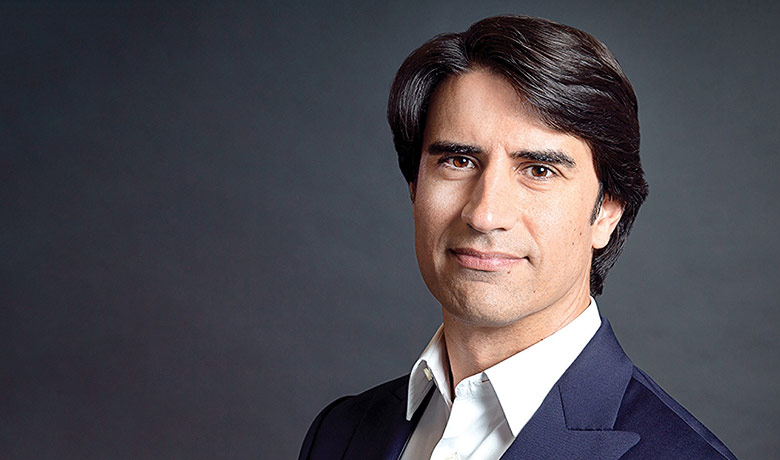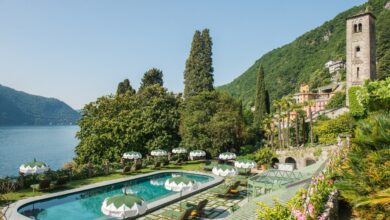Turning To Technology
By Larry Mogelonsky | January 4, 2021
We all want the pandemic to be over, but the night is darkest just before the dawn. I view these next three months—filled with COVID-19 mutations in the UK, more lockdowns and the start of vaccine dissemination—as a lull period where smart hoteliers will set their properties up for success later in the calendar year. And the best way to accomplish that is to look at how you can create the best possible tech ecosystem.
While properties have always touted a myriad of technological deployments to augment the guest journey, most have only ever been peripheral to the duties performed by frontline teams, supervisors and managers. Where COVID-19 will continue to impact various departments is in the pursuit of exceedingly automated services to meet the booming demand for ‘person-less accommodation experiences.’ Namely, the virus has fundamentally shifted many customers’ mentalities to no longer want any direct contact with the hotel staff, and therein lies a tremendous opportunity to cut costs as well as redefine what services you offer based upon the mountains of new data you will have.
Much of this has already been handled during the lockdown period earlier this year to meet the need for a more touchless and sanitized environment in order for guests to feel safe. New technologies like self check-in, mobile room keys, contactless payment platforms, guest service messaging apps and housekeeping upgrades like the use of electrostatic sprayers were all necessary to meet the new COVID safety guidelines and give travelers peace of mind. However, these have mostly become expected and may not necessarily add any perceived value to the guest experience.
While every property or brand is different in terms of where they draw their revenues, simply adding in new features to continue to address viral transmission may not be enough to further motivate leisure guests after they’ve all taken their first post-pandemic staycation. Instead, gaining loyal customers and return visits as well as new guests for the months ahead requires a thorough understanding of their key drivers and what personalized services they want.
Technology has thus become instrumental for catering to the demands of the next normal—that is, the two quarters following the initial pandemic recovery during the summer—and here are six broad practices to look at for this upcoming low season.
- Developing a trendsetting culture. One of the reasons many hospitality operations have been so often labeled as tech laggards is that we have always had great teams doing great things. The pandemic has not only forced us to abandon this people-first philosophy, but also to adopt a much quicker cycle of implementation. Trends move too fast for a quarterly committee evaluation; if a piece of hardware or software can improve automation, compliance or service then it needs to move up the chain of command within a matter of weeks or else you will already be behind the times. We are already seeing this with the creation of a cleanliness committee or hygiene manager tasked with accelerating the setup of anything that can further reduce the chances of viral spread, and now this same attitude must be adopted for all technological implementation.
- Understanding person-less. As behaviors have all but permanently changed from the pandemic, many people have come to value anonymity over cleanliness as a core driver for booking. That is, and somewhat in contrast to the previous point’s example, advocating your new chief hygiene officer to the public or the great pains your housekeeping team has gone to won’t win hearts and minds. While guests will indeed want to know about these safety measures, it is expected that you have them in place and not necessarily an emotional booking factor. What may in fact work are services designed for guests who want a totally hands-off experience. Beyond those aforementioned offerings, these amenities can range from having sanitized snacks or groceries left outside the room at specific times to having ancillary facilities made available without ever catching sight of the staffers who made it happen.
- Making everything integrate. All the new tech implementations in the past year have resulted in a huge amount of new data at your disposal. But the managers who are still around don’t have time to cross-reference a dozen or so applications let alone manually migrate information from one to the other. With everything connecting onto one or two central platforms, it reduces the total workload for your team and allows you to better understand your guests. Go further, though, such as investigating flight integrations to enhance the arrival experience or direct online bookings for third-party activity providers to encourage ancillary capture and satisfaction.
- Harnessing your CRM. Speaking of understanding your guests, many hotels still aren’t properly utilizing their guest profile data aggregators to develop personalized service offerings and appealing packages. For instance, based on this past summer’s staycation performance, can you identify any micro-clusters where guests are coming from? What are the most common questions or service requests that you can bundle into a fall promotion or simply anticipate then pre-emptively answer to save your team time? With a guest messaging app in place, what can you learn from the top inquiries via these channels and what can you do to leverage these behaviors to get more return visits?
- Small leisure groups. Travel metrics from the summer have pointed to the successes of secluded, multi-room lodgings where groups of safe sizes can vacation together without regularly encountering other guests or staff. This behavior will repeat itself for the upcoming holiday season with families, reunions and intimate company parties all looking for an appropriately distanced venue where they can gather for a few days while enjoying some fantastic meals together and perhaps a few activities. Hotels can therefore capitalize upon this trend by setting up programs that cater to this demand by offering connected rooms or whole room sections along with those services most likely to be desired for a holiday getaway. As before, all this would have to be made seamless and contactless, then advertised through agile digital channels to accommodate today’s climate of last-minute bookers.
- Working from a hotel. Many companies are planning to make remote work a permanent option for their employees, but this means that many will also become quite stir-crazy. Local hybrid travel—bleisure to use the proper portmanteau—will be on the rise, although such customers will be looking for those properties in their region that are specifically set up for mixing business with pleasure. Executives need comfortable office spaces adjoining their bedrooms along with all the appropriate technologies to seamlessly work from an inspirational setting. Besides dispatching your sales team to seek out partnerships with larger corporations—perhaps even introducing a day rate or subscription model to said organizations—marketing will require finding the right channels, including the OTAs, to promote such a program.





Get involved!
Comments